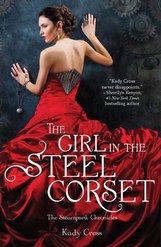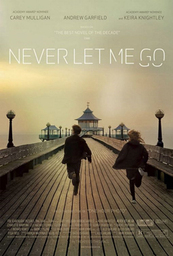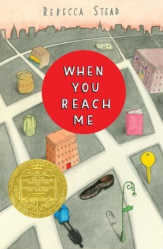
The girl in the steel corset by Kady Cross
Harlequin Teen, 2011
It is the middle of the night in Victorian London, and Finley Jayne is fleeing from from her lecherous employer. When duke Griffin King practically runs her over with his motorized bicycle when she appears out of the darkness, he takes her to the home he shares with his close friends to ensure that she is okay. She soon proves herself to be physically fit when she flings a grown man across the room after awaking in a panic. Thus begins a tenuous friendship between Finley and Griffin, and when their special skills are revealed to each other - as well as to Griffin's friends Emily and Sam - it turns out that they are connected far more than they ever would have guessed and have a common enemy.
If The girl in the steel corset is any indication of the genre, it turns out that I really, really like steampunk. This shouldn't be a surprise given that I adore dystopian fiction, historical fiction, and science fiction. It should have been a no-brainer. Nonetheless, more please!
Kady Cross vividly describes the London of her imagination. With automatons performing household tasks and tiny portable telegraph machines that are basically the Victorian version of texting (clever!), as well as potent descriptions of odors and atmospheres, it was easy to fall into the story. And fall in I did, whipping through 477 pages in 2 days.
Cross also switches perspectives often, from Finley to Griffin to Emily to Sam, which would sometimes drive me batty but is executed here with such skill that I actually liked it. The different points of view were often refreshing and provided valuable snippets of information, and I felt more connected to all of the characters as a result. Indeed, I found all of the characters to be very well developed and interesting, even secondary characters like Cordelia and Jack Dandy: not a cookie-cutter among them. True, The Machinist was a bit one-dimensional, but vengeance can do that to a person.
I'm not saying much about the characters because I found much of the joy of reading this book was watching the characters revealing themselves to the reader as well as to one another, and the plot unfolds naturally and excitingly. My one complaint is that I got a bit sick of hearing about Emily's "ropey" hair, which is a phrase that appears more than 10 times during the book (one of the advantages/curses of electronic galleys is document searching). If that's my only issue, as far as I'm concerned it's a damn good read.
About halfway through the book, it struck me that The girl in the steel corset is basically X-Men set in the late 19th century with robots. Finley, Griffin and their cohorts are mutants. Truly. They are never referred to as such, and the causes of their powers are clearly explained, but elements of comradery and fighting a common enemy are certainly there. Also like X-Men, it looks as if this is going to be a series and I will be keeping my eyes wide open for the second book in The Steampunk Chronicles.
**Electronic galley provided by publisher via NetGalley.
Harlequin Teen, 2011
It is the middle of the night in Victorian London, and Finley Jayne is fleeing from from her lecherous employer. When duke Griffin King practically runs her over with his motorized bicycle when she appears out of the darkness, he takes her to the home he shares with his close friends to ensure that she is okay. She soon proves herself to be physically fit when she flings a grown man across the room after awaking in a panic. Thus begins a tenuous friendship between Finley and Griffin, and when their special skills are revealed to each other - as well as to Griffin's friends Emily and Sam - it turns out that they are connected far more than they ever would have guessed and have a common enemy.
If The girl in the steel corset is any indication of the genre, it turns out that I really, really like steampunk. This shouldn't be a surprise given that I adore dystopian fiction, historical fiction, and science fiction. It should have been a no-brainer. Nonetheless, more please!
Kady Cross vividly describes the London of her imagination. With automatons performing household tasks and tiny portable telegraph machines that are basically the Victorian version of texting (clever!), as well as potent descriptions of odors and atmospheres, it was easy to fall into the story. And fall in I did, whipping through 477 pages in 2 days.
Cross also switches perspectives often, from Finley to Griffin to Emily to Sam, which would sometimes drive me batty but is executed here with such skill that I actually liked it. The different points of view were often refreshing and provided valuable snippets of information, and I felt more connected to all of the characters as a result. Indeed, I found all of the characters to be very well developed and interesting, even secondary characters like Cordelia and Jack Dandy: not a cookie-cutter among them. True, The Machinist was a bit one-dimensional, but vengeance can do that to a person.
I'm not saying much about the characters because I found much of the joy of reading this book was watching the characters revealing themselves to the reader as well as to one another, and the plot unfolds naturally and excitingly. My one complaint is that I got a bit sick of hearing about Emily's "ropey" hair, which is a phrase that appears more than 10 times during the book (one of the advantages/curses of electronic galleys is document searching). If that's my only issue, as far as I'm concerned it's a damn good read.
About halfway through the book, it struck me that The girl in the steel corset is basically X-Men set in the late 19th century with robots. Finley, Griffin and their cohorts are mutants. Truly. They are never referred to as such, and the causes of their powers are clearly explained, but elements of comradery and fighting a common enemy are certainly there. Also like X-Men, it looks as if this is going to be a series and I will be keeping my eyes wide open for the second book in The Steampunk Chronicles.
**Electronic galley provided by publisher via NetGalley.


 RSS Feed
RSS Feed